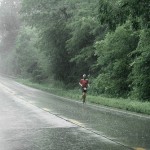
The rains came at mile 19. If I turned left, I’d face two hilly miles of trails. If I turned right, I’d be home and dry (apart from the post-run beverage) in 3 minutes. I’d wanted to put in 21 miles today, since I’ve got exactly five weeks to deflabulate before the Twin Cities marathon. I was definitely leaning rightward until I recalled a conversation with (grad student and TSP board member) Suzy McElrath, where she shared her enthusiasm for rain-soaked running.
So I headed left, plunged down the slippery trail, and staggered up the first big hill, hamstrings tight and calves aching. It was just me on the trail, aside from a gang of wild turkeys and a few rabbits. It wasn’t a hard rain and the cool water felt good. As I moved farther from the street, everything got quiet except for the steady patter of rain and reverberating footsteps.
I couldn’t see much through the rain and fog of my glasses, which seemed to accentuate the sound. I noticed that the rain almost hissed as it slid through the willow tree by the pond. The big oak leaves brought a crisper midrange sound, like the bite of an apple or a ’62 stratocaster. But then I turned a corner and hit a patch of broad leaves that looked like rhubarb, close to the ground. The raindrops played these deep and low like timpani drums, but tapped lightly by fingertips rather than mallets.
Suffice it to say that miles 19 to 21 turned out to be really beautiful, and that I wouldn’t have run them at all without Suzy’s encouragement. This reminds me that when a university brain mill is really humming, there’s a mutual-inspiration feedback loop between students and faculty, which surely ranks among the greatest privileges and joys of being a professor.
So after today’s rain-soaked training run, I wanted to add a special note of thanks to the TSP grad board as an addendum to Doug’s post about the community that came together in Denver. The grad board generally toils anonymously, though our editorial team and WW Norton take care to recognize their contributions. And, if all goes as planned, you’ll soon be hearing more about some new pages on the site to more properly introduce you to their great ideas, vision, and scholarship.
Board members like Suzy (at right), Hollie Nyseth Brehm (at left), and their cohorts probably don’t know how much they inspire us to build and sustain The Society Pages. But when Doug, Letta, Jon and I confront a fork in the road, time and again our grad board pushes and inspires us to take the route that is both more challenging and more richly rewarding.

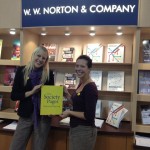

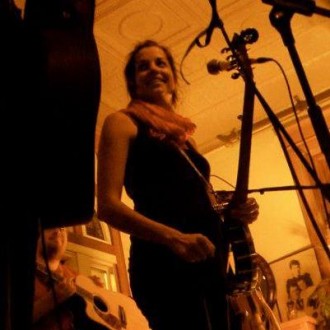

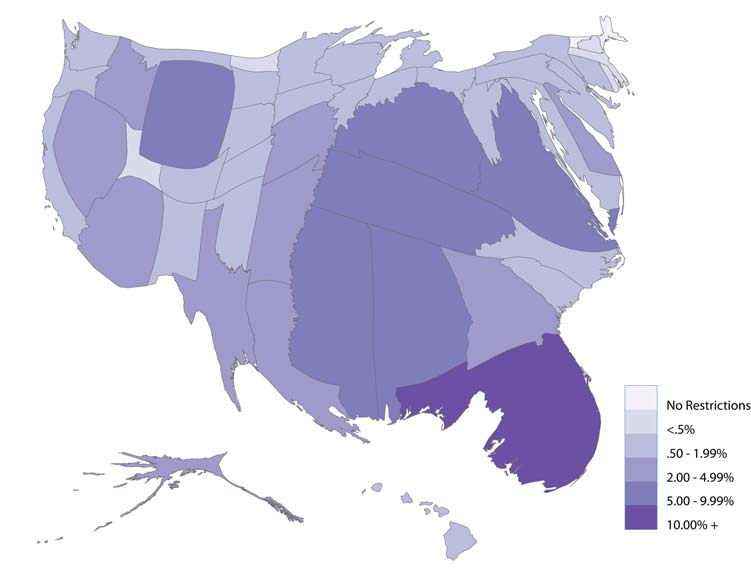



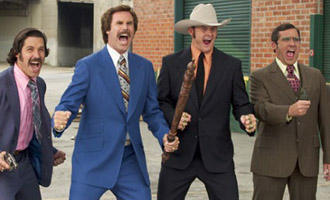
![291402242_608acc3c7a[1]](https://thesocietypages.org/editors/files/2012/02/291402242_608acc3c7a1-219x330.jpg)